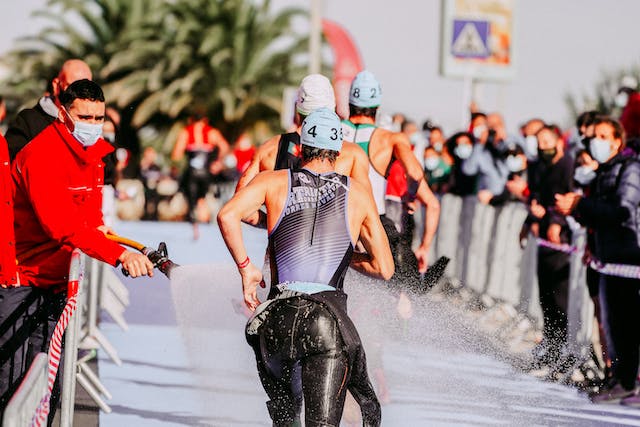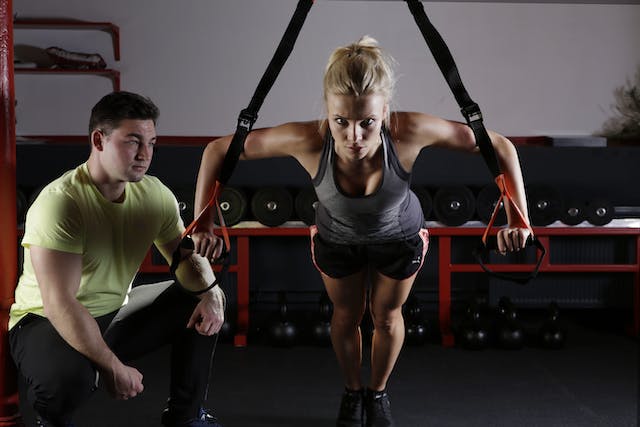Strength and Conditioning for Endurance Athletes: Building a Foundation for Peak Performance


Introduction
In the world of endurance sports, success is often attributed to an athlete’s ability to persist, pushing through physical and mental barriers. However, what many fail to realize is the critical role that strength and conditioning play in building that endurance. This blog dives deep into the essentials of strength and conditioning for endurance athletes and explores the concept of exercise progressions and regressions, shedding light on their importance in an athlete’s training regimen.
Part 1: The Importance of Strength and Conditioning for Endurance Athletes
Building a Robust Foundation
Endurance athletes, whether they are runners, cyclists, swimmers, or triathletes, require a strong foundation. Strength and conditioning programs are not just about building muscle; they are about enhancing the athlete’s overall performance. These programs improve muscular strength, increase bone density, enhance joint stability, and reduce the risk of injury, creating a more resilient athlete.

Core Components of a Strength and Conditioning Program
- Resistance Training: Key for building muscle strength and endurance, resistance training helps athletes perform better and longer. Exercises like squats, deadlifts, and lunges are staples.
- Plyometrics: These exercises improve power, speed, and efficiency by teaching the muscles to contract more quickly and forcefully. Box jumps and plyometric push-ups are excellent examples.
- Core Strengthening: A strong core is vital for maintaining proper posture and form, especially in the later stages of endurance events when fatigue sets in. Planks, Russian twists, and stability ball exercises are crucial.
- Flexibility and Mobility Work: Incorporating stretching and mobility exercises into the training regimen ensures that muscles and joints function optimally, reducing the risk of injuries.

The Role of Recovery
Recovery is an integral part of strength and conditioning. It allows the body to repair and strengthen itself between workouts. Adequate sleep, proper nutrition, and techniques such as foam rolling and massage are essential components of an effective recovery strategy.
Part 2: Exercise Progressions and Regressions: Tailoring the Training to the Athlete
Understanding Progressions and Regressions
Exercise progressions and regressions are methods of adjusting the difficulty level of exercises to match the athlete’s current fitness level, goals, and any physical limitations. Progressions increase the challenge, whereas regressions reduce it, ensuring that each workout is appropriately challenging and safe.
When to Progress
An athlete should consider progressing an exercise when:
- They can perform the current version with proper form and relative ease.
- Their performance has plateaued, and they’re no longer seeing improvements.
- They are seeking to increase their strength, endurance, or both, and are ready for a new challenge.
Examples of Progressions
- Increasing the weight lifted in strength exercises.
- Incorporating instability elements, like using a Bosu ball for squats.
- Adding movement complexity, such as transitioning from a regular plank to a side plank.

When to Regress
Regressions are necessary when:
- An athlete is recovering from an injury and needs to reduce the load or intensity.
- The athlete struggles to maintain proper form, risking injury.
- A decrease in performance indicates that the athlete may have advanced too quickly.
Examples of Regressions
- Decreasing the weight or using bodyweight exercises.
- Simplifying movements, like replacing jump squats with regular squats.
- Shortening the range of motion or incorporating supportive equipment.

Balancing Progressions and Regressions
The art of effectively integrating progressions and regressions lies in the constant assessment and feedback loop between the athlete and coach. It’s about recognizing the fine line between challenging the body to improve and pushing too hard, risking overtraining or injury. Tailoring the program to the athlete’s current level while keeping long-term goals in sight ensures continuous improvement and peak performance.
Conclusion
Strength and conditioning for endurance athletes is a multifaceted approach that goes beyond just logging miles or hours in the pool. It’s about building a body capable of withstanding the demands of endurance sports and pushing beyond previous limits. By understanding and applying the principles of exercise progressions and regressions, athletes and coaches can create a dynamic, effective training plan that adapts to the athlete’s needs, promoting growth, preventing injury, and paving the way for achieving and surpassing goals.
Whether you’re an aspiring marathon runner, a seasoned triathlete, or somewhere in between, integrating these principles into your training regimen will not only enhance your physical capabilities but also equip you with the resilience to face the mental challenges of endurance sports. Remember, strength and conditioning are not just supplementary; they are foundational to your success as an endurance athlete.

